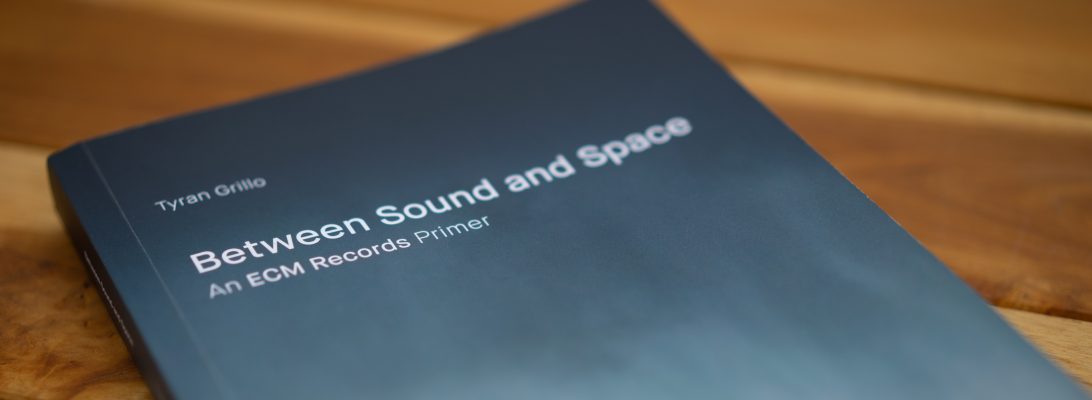Hans Otte
Das Buch der Klänge
Herbert Henck piano
Recorded September 1997, Festeburgkirche, Frankfurt am Main
Engineer: Markus Heiland
Produced by Manfred Eicher
“It is an old dream of mine that the nature of sounds is discovered and that they are not used in order to express something else.”
–Hans Otte
Hans Otte (1926-2007) was a German composer, pianist, and sound installation artist. A student of Paul Hindemith, he came to see the role of sound as a phenomenon in its own right, and seems to have treated his piano music as a crucible in which musical lexicons might be boiled down to their essential vocabularies.
Herbert Henck offers up this sweeping interpretation of Otte’s twelve-part masterwork, Das Buch der Klänge (The Book of Sounds), as a stunning example of what piano music can grow into when loosed from its binds and allowed to breathe of its own volition. The cycle was three years in the making, and exudes gentle and attentive care. Part I is remarkably consonant, seesawing between the same two chords while alternating with more quickly syncopated passages. From these first moments we get the sense of travel that comes to characterize the trajectory to follow. There is also a nostalgic air that one finds in many of John Adams’s earlier compositions (and especially in Phrygian Gates). Part II undulates in cascades, from which single notes call out with assurance and clarity. Part III returns us to the journey, its slowly applied chords pressing like footsteps into the soil. Part IV erupts in dramatic cloudbursts, bleeding into Part V, in which the same chords are deployed with more urgency. The piano sings here, knitting between its open strings the makings of a vocal tract. Part VI is a linear melody, each note dotting the darkness with a distant galaxy. Part VII is one of the most spiritual sections of the piece, and is like the ostinato of a more expansive composition that never develops into a lead line, but rather looks inward via more pinpointed notes within arpeggiated clusters. In dispensing with the imagined right hand, the music speaks for itself, as if to untie the binds of its inner heart so that each note may flow freely through its ventricles. Part VIII marks the return of cautious footsteps. This is the frustration of travel, the annoyances, delays, and logistic disconnects that are inevitable when experiencing any new culture, however adored. Part IX at last offers some reprieve, giving itself over into rest. It is the time of reflection, when the return seems all too imminent and the lessons learned have hardly had time to take root, and we come to realize that those moments of misunderstanding are the ones we cherish the most. Part X shines like the dawn. Only now do we realize this landscape may be forever lost to us, so we glory in every flaw and perfection alike while we still can, in the hopes of carrying it inside us when we leave. Throughout Part XII, one hears a little Satie peeking through in the finality of its playful departure. It is the quiet checkered landscape below on the return flight, the silent coastline receding behind the ship, the cloud of dust churning behind the bus, the slowly waving hand left behind at the train station. All such moments are brought to bear in Otte’s Buch, so that all we have left is this audible postcard on the back of which Henck has inscribed as much as could possibly fit in such a limited space. But the real beauty of this recording is that, as a tangible object, it can be held, turned in the hands, admired for its cover art, intellectually fed upon through its liner notes, and the journey repeated at any moment one wishes. It is music like this that reminds us of the pleasurable luxury of recordings and their didactic effect. They transport us to unseen locations, or conversely reconstruct those locations stone by stone in our very minds without us having to lift a finger. Most importantly, they allow us to appreciate the very real experiences we have in our own travels, and in doing so give us the gift of hindsight, reminding us of how memory shapes who we are.
Considering Henck’s often-eclectic approach, I was both surprised and reassured by his championing of Otte. Although Henck has always chosen fascinating material, the reductive power of this music is nothing short of revelatory. These sounds speak directly to the heart and feel as if they grew out of solitary nocturnal improvisations. Notions of minimalism are easily vanquished with a careful listen, which reveals a wealth of subtle details and variations peppered throughout. Through the infliction of its uneven terrain, the joys of arrival and the memories that linger once the destination has been found become one and the same. Henck plays with grace and fortitude, making explicit use of the sustain pedal and the instrument’s own internal space. This is music that looks simple on paper, but requires personal commitment to articulation, speed, timing, and volume. Thus, it becomes a magnifying glass into the musician’s, and the listener’s, sense of being. By far one of ECM’s finest achievements.


